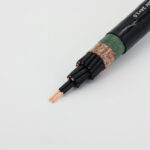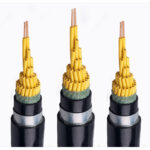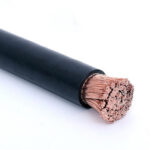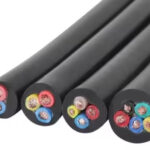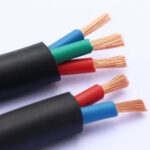When working with IT equipment, servers, or even standard desktop computers, you’ll often encounter the terms C13 and C14. These connectors are part of the IEC 60320 standard, and they are among the most common plug types worldwide.
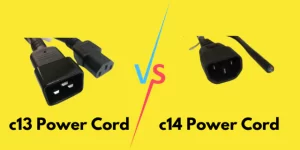
C13 vs C14 Power Cords
But what’s the actual difference between C13 and C14? And how do you know which one you need? Let’s break it down.
1. The Basics of IEC 60320
The International Electrotechnical Commission (IEC) created the IEC 60320 standard to ensure safe and interchangeable power connectors worldwide.
C13 = Female connector (the cord end that plugs into equipment).
C14 = Male inlet (the power socket built into the device).
👉 Think of it this way: C13 is the plug, C14 is the socket.
2. Physical Differences Between C13 and C14
C13 (female):
Has three rectangular holes.
Found on the end of the power cord.
Plugs into the equipment.
C14 (male):
Has three rectangular prongs.
Built into the device itself (like a computer power supply or server).
Accepts the C13 connector.
📸 [Tip: Use a simple diagram or image showing the C13 plug vs. the C14 inlet for clarity.]
3. Electrical Ratings
Both C13 and C14 are designed for similar power requirements:
Rated Current: Up to 10A (North America) or 15A (Europe/Asia).
Rated Voltage: Up to 250V AC.
Temperature: Up to 70°C for standard versions (C15/C16 variants are available for higher temps).
This makes them ideal for computers, monitors, printers, and networking devices.
4. Common Applications
| Connector | Location | Used For |
|---|---|---|
| C13 (female) | On the power cord | Plugs into PCs, servers, monitors |
| C14 (male) | On the device inlet | Found on power supplies, servers, switches |
💡 Example: Your desktop PC has a C14 inlet. You plug in a C13 cord connector from your power cable.
5. How to Choose Between C13 and C14
The truth is: you don’t choose between them—they work as a pair.
If your device has a C14 inlet, you need a power cord with a C13 connector on one end.
The other end of the cord usually has a regional plug (e.g., NEMA 5-15P in the US, Schuko in Europe) that goes into the wall outlet or PDU.
So, your main choice is not C13 vs C14, but rather:
Cord length
Wire gauge
Wall plug type
6. C13/C14 vs Other IEC Types
While C13/C14 dominate the market, they’re not the only IEC connectors.
C15/C16: High-temperature version for appliances like kettles.
C19/C20: For high-power servers and UPS systems.
If you’re working with larger IT infrastructure, you may need C19 cords instead.
🔎 Conclusion
The difference between C13 and C14 is simple:
C13 is the female power cord connector.
C14 is the male inlet on the device.
They always work together, providing safe and standardized connections for millions of devices worldwide.
Before buying, always check your equipment’s inlet type, then choose the correct C13 power cord with the right length, gauge, and regional plug for your setup.

